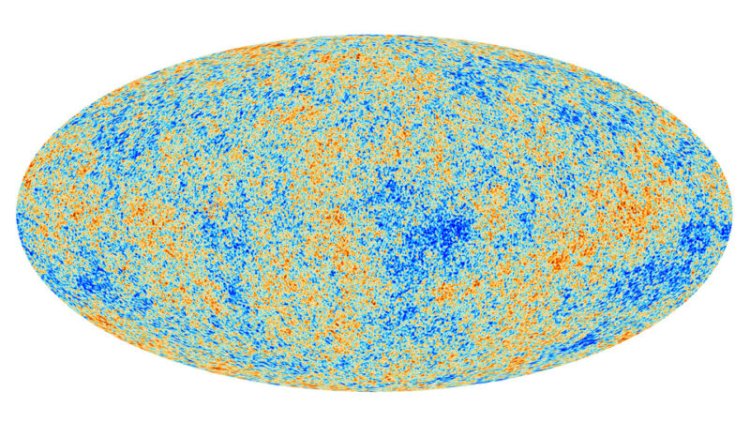Scientists Say: Cosmic microwave background
The cosmic microwave background is the afterglow of the Big Bang.

Cosmic microwave background (noun, “KAHZ-mik MYK-roh-wayv BACK-grownd”)
The cosmic microwave background is the afterglow of the Big Bang. It fills the whole universe and is the oldest light we can see.
The Big Bang formed our universe nearly 14 billion years ago. At first, the cosmos was a soup of piping hot, charged particles. They were packed so tightly they couldn’t move easily — like bumper cars with too many cars. This dense plasma also prevented light from moving far.
But by 380,000 years after the Big Bang, the universe had expanded and cooled to roughly 3,000 kelvins. (That’s 2,700º Celsius or 4,940º Fahrenheit.) At that temperature, electrons and protons could link up to form atoms. This freed up space for light waves to zip through the universe. And those first free-roaming light waves became the cosmic microwave background.
At first, those light waves were very energetic. But as the universe has grown and cooled off a lot over billions of years, so has the cosmic microwave background. Its light waves now have an effective temperature of about 2.7 kelvins (–270 ºC or –455 ºF). Such waves are in the microwave part of the electromagnetic spectrum.
The cosmic microwave background looks mostly the same throughout the whole universe. But telescopes have detected tiny variations in its temperature that arose from slight differences in the density of plasma that filled the early universe. Regions that were denser gathered more matter and got bigger. They ultimately led to the formation of stars and galaxies. So the speckled temperature differences seen in maps of the cosmic microwave background? Those are imprints of the first small seeds that gave rise to the largest cosmic structures of today.
In a sentence
Space-based telescopes today are able to see back in time by measuring and mapping the cosmic microwave background.
What's Your Reaction?












![[Computex] The new be quiet cooling!](https://technetspot.com/uploads/images/202406/image_100x75_6664d1b926e0f.jpg)








